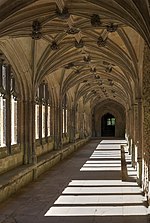Lacock Halt railway station
Beeching closures in EnglandDisused railway stations in WiltshireFormer Great Western Railway stationsRailway stations in Great Britain closed in 1966Railway stations in Great Britain opened in 1905 ... and 1 more
Use British English from March 2020
Lacock Halt was a minor railway station on the Chippenham–Trowbridge section of the former Wilts, Somerset and Weymouth Railway (WSWR), which opened as far as Westbury on 2 September 1848. This connected to the Great Western Main Line at Thingley Junction (southwest of Chippenham) and was incorporated into the Great Western Railway in March 1850 after the WSWR ran into financial difficulties.
Excerpt from the Wikipedia article Lacock Halt railway station (License: CC BY-SA 3.0, Authors).Lacock Halt railway station
Corsham Road,
Geographical coordinates (GPS) Address Nearby Places Show on map
Geographical coordinates (GPS)
| Latitude | Longitude |
|---|---|
| N 51.42276 ° | E -2.13726 ° |
Address
Corsham Road
Corsham Road
SN15 2NE , Lacock
England, United Kingdom
Open on Google Maps






